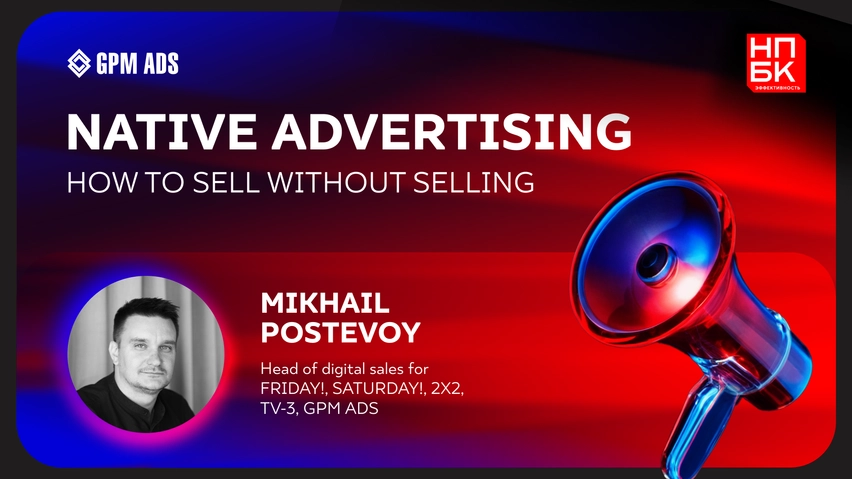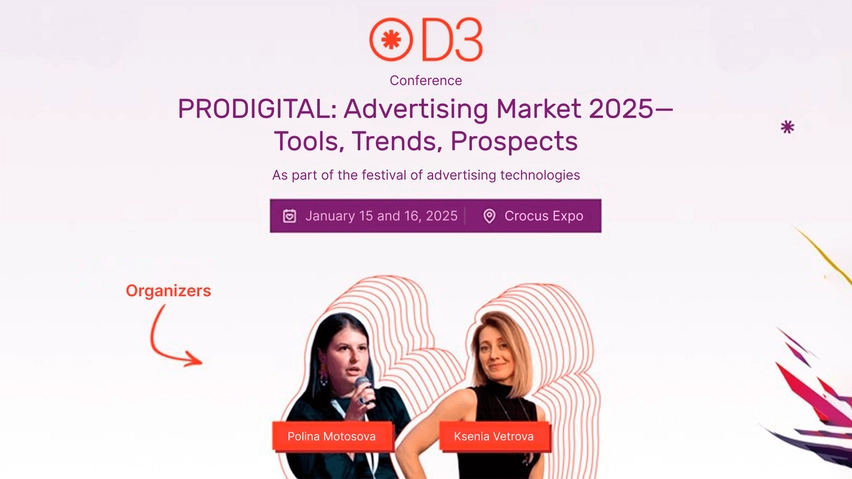
July 12, 2024
Digital
Mobile inventory in Getintent: manage transparent media buying with a wide range of formats in mobile web and in-app!
Mobile devices have become an integral part of our daily lives, in many cases replacing desktop PCs. According to a Mediascope1 study, individuals aged 18–45 spend more than five hours a day on mobile devices (smartphones and tablets), and over 90% of all digital consumption occurs on mobile devices. People use smartphones and tablets for everything from browsing social media and email to making purchases and interacting with brands. As a result, mobile advertising has long been a crucial component of marketing strategies.
This dynamic and growing channel provides the opportunity to address both branding and performance objectives. The benefits of programmatic mobile advertising include:
- Broad, high-quality reach, including both web and in-app traffic.
- A variety of ad formats, such as standard banners, full-screen banners, and video ads, allowing you to achieve a wide range of goals and effectively capture the audience’s attention.
- Flexible targeting that allows you to tailor ads based on geographic location, display time, device type, operating system, and other parameters.
- The ability to use Dynamic Creative Optimization (DCO) to create personalized ads based on historical user data.
Adience for Any Objective
Mobile advertising campaigns provide an audience for any objective that will help you achieve set goals and capture the attention of your target audience.
For branding objectives, it’s important to build wide and high-quality audience reach. It is possible to reach over 1 trillion impressions in one month, with 58% coming from websites and 42% from mobile apps.
For performance objectives, where the main focus is on user actions, the following goals can be achieved:
- Clicks: tracking intermediate goals like adding to cart, favorites, visiting product pages, and sign ups
- Target actions: placing an order, submitting a feedback form, watching a video
- App downloads and installations
Here’s more information on the key metrics used to analyze user activity in the app:
DAU (Daily Active Users): the number of unique users per day. Consistently high DAU indicates that users are interested in your product.
WAU (Weekly Active Users): the number of users per week. A week is not necessarily Monday through Sunday. It could be a period from Wednesday to Tuesday. In fact, a week can be any consecutive 7-day period. MAU (Monthly Active Users): the number of unique users per month.
ARPU (Average Revenue Per User) is a measure of how much money each user brings into the app on average.
LTV (Lifetime Value): the average revenue generated by a user over their entire lifetime within the app.
Retention Rate: the rate of users returning to the app.
The percentage of users who started using the app during a selected period and are still active, returning to the app after 1, 7, 14, and 30 days.
To achieve your goals, high-quality traffic is a must. We are partnered with all leading inventory suppliers in the market: OTM, OhMyBid, Buzzoola, Sape, Between Digital, Mobidriven, Solta, Union Media, Bidvol, SilverMob.

Available KPIs for Mobile Optimization
Defining and tracking KPIs helps evaluate the effectiveness of mobile advertising campaigns, optimize strategies, and achieve better results.
In the chart below, we have summarized the financial and performance metrics that we use in our work.

Web and In-App Formats
Mobile ad formats can include various types of ads optimized for viewing on mobile devices. The choice of ad format depends on the campaign goals, the target audience, and the context in which the ad will be displayed.
Mobile Web Display
- Standard Banner: a creative within the mobile site
- Interstitial Banner: full-screen banner
Mobile app display
- Standard Banner: a creative within the app
- Mobile App Interstitial: full-screen banner. It appears when the user transitions between different app pages
Mobile web video
- In-Stream Video: on the website, in the publisher’s video player
- In-Feed Video (Out-Stream): in the site content
- Video Interstitial: full-screen video outside the video player
Mobile app video
- In-Stream video: in the app’s video player
- Out-Stream video: in the app content
- Rewarded Video: video creative within the app for in-game rewards
Effective use of ad formats helps achieve greater visibility and draw users’ attention to ad messages.

Targeting
Targeting in mobile ad campaigns refers to selecting a specific audience you want to reach with your ads. This helps optimize campaign effectiveness by allowing you to target only those exact users most likely to be interested in your product or service.
When selecting targeting for mobile ad campaigns, you can consider various factors such as geographic location, display time, device type, and more.

Targeting helps increase conversion and ROI on your advertising investments by reaching a target audience that is likely to be interested in your niche or product. It also gives you tighter control over your spend by allowing you to choose only the most relevant user groups for your ads.
DynamicRetargeting in Mobile Web
In 2023, Getintent lintroduced an enhanced product with its own retargeting technology: DCO 2.0. The tool fully addresses the challenges of attracting consumers to websites through retargeting with dynamic creatives and features an improved infrastructure as well as a range of effective ML (Machine Learning) models to achieve set goals. In the updated DCO 2.0 version, products are placed on personalized banners based on user behavioral factors such as items viewed, categories browsed, cart additions, and conversions.
In the setup, we use best-selling product offers, prioritizing products and categories in wish lists, and ignoring products and categories in stop lists. Additional settings for priority products allow advertisers better control over which categories or products will be displayed in the dynamic banner.
DCO creatives are available for launch in mobile web, where product selection is based on historical user data and bestsellers are based on pixel data.
In-App Retargeting Using SDK
For in-app retargeting, we need to collect data on user actions. But unlike websites, it’s impossible to place pixels in mobile applications, so we need to use a postback method. A postback is a notification of an event occurring.
Typically, MMPs (mobile measurement platforms) such as Adjust, MyTracker, or AppsFlyer are used to send and track statistics.
When a user performs an action in the client’s app, the partner’s SDK (Software Development Kit) processes the action and sends it to the partner’s server. The partner then sends us a postback with the user action data from their server. However, this path is often complicated by unnecessary approvals.
An alternative is to connect a separate SDK library to the app, which can send event data on its own.
Our team has built its own SDK to receive user action data directly from the client’s app without using third-party services. This shortens the chain of actions above to just two steps and allows us to receive postbacks directly from the advertiser’s app:
How to Connect the Getintent SDK (available on iOS and Android):
1. The advertiser installs the Getintent SDK into the app and configures it according to the instructions.
2. All events from the app are sent directly to the Getintent platform.
Creating an Ad Campaign
For the second year in a row, we’ve seen increased demand for in-app inventory in the Russian advertising market. It is now used not only for performance tasks related to app installations, but also for building awareness, purchase frequency, and for other purposes.
If you have ambitious in-app goals, don’t wait to launch your advertising campaign. Below we share valuable step-by-step recommendations on how to set up a proper ad campaign.
To create an ad campaign, select the following tabs: “Advertising Campaigns” → “New Campaign” → choose the campaign format.
For convenient setup, the editing page is divided into blocks:
- Main: Basic campaign settings
- Targeting: Main targeting settings (geography and app topics)
- Additional Targeting: Technical targeting settings (user’s device type or OS)
- Negative Targeting: Rules for excluding part of the traffic from the campaign
- Other: Miscellaneous settings
- How to create a campaign on the Getintent platform.
- What settings to use for in-app.
- Important nuances related to in-app traffic.
- And of course, we share some pro tips!
Achieve effective results with quality mobile traffic together with Getintent!
Do you want to advertise?
Send us a message right now, and our managers will get back to you right away!
What type of advertising are you after?







.png?quality=100&width=852&format=webp)

 (1).jpg?quality=100&width=852&format=webp)

